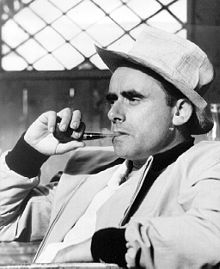 Although Victor Hugo’s 1862 novel is unparalleled in magnificent prose, intricate plot and character development, most of us will not bother to read his 1200+-page story. But now that this epic romance has gone from Broadway musical to Hollywood’s screen, here’s a primer on the plot, which doesn’t give justice to Hugo’s prose but may facilitate following the complicated story. For those of you who were busy writing love notes during your high school European history classes, you might want to brush up on the 1815 Battle of Waterloo and the French uprisings of the 19th century, especially that of 1832, to fully understand the historical backdrop of the novel.
Although Victor Hugo’s 1862 novel is unparalleled in magnificent prose, intricate plot and character development, most of us will not bother to read his 1200+-page story. But now that this epic romance has gone from Broadway musical to Hollywood’s screen, here’s a primer on the plot, which doesn’t give justice to Hugo’s prose but may facilitate following the complicated story. For those of you who were busy writing love notes during your high school European history classes, you might want to brush up on the 1815 Battle of Waterloo and the French uprisings of the 19th century, especially that of 1832, to fully understand the historical backdrop of the novel.
In Les Miserables, Jean Valjean, the protagonist, has been jailed for 19 years for stealing a loaf of bread. When Valjean is released from prison, he foolishly steals silver from the bishop in Digne. When the bishop mercifully pretends to the police that the silver was a gift, thereby securing Valjean’s release, Valjean realizes that now his life must be dedicated to good.
Eager to fulfill his promise of virtue, he masks his identity and makes a new start in a village in the north of France. He changes his name to Madeleine, invents a manufacturing process which brings the town prosperity, eventually becomes mayor of the town and is beloved by the people. Along the way, he befriends Fantine, a single mother who has been arrested for prostitution and is dying. As a deathbed promise, he agrees to look after Fantine’s 10-yr-old daughter Cosette, who was living with a nasty, abusive couple called the Thénardiers. So begins the tender and tragic story of Valjean’s relationship with sweet little Cosette. He buys her from the Thénardiers and takes her to Paris as promised, to raise her and begin life anew, first in a monastery and then in the city.
The antagonist and Valjean’s tormentor is Javert, a single-minded, law-obsessed police chief of the village who sees justice only in narrow terms. Javert has discovered Valjean’s criminal past and vows to hunt and punish him. The story progresses, and Cosette grows up. She falls in love with Marius, who is intimately involved with the uprisings against the government in 1832, but Valjean fears this union of his precious daughter and Marius.
Meanwhile, Javert moves to Paris and picks up the scent of his old adversary who is once again forced to flee Javert’s vengeance. Violence erupts just then in Paris as the revolutionaries set up barricades. Valjean attempts to rescue Marius from a terrible fate, but is thwarted. At the same time, Javert, hunting Valjean, is captured by the revolutionaries who want to execute him. Valjean offers to do the deed but in a show of kindness reminiscent of the bishop’s kindness to him, he secretly lets Javert go free, and then carries a wounded Marius through the Paris sewers to escape only to be caught once again by Javert.
Javert, tormented, is torn between his duty to his profession and the debt he owes Valjean for saving his life. Unable to reconcile his mixed emotions, Javert chooses to plunge into the River Seine in one of the most moving scenes of the novel/musical/movie.
Cosette and Marius are finally married, but the Thénardiers resurface and tell Marius the truth about Valjean’s past, hoping to ruin Cosette’s relationship with her father. Marius tries initially to separate Cosette from her adopted father upon learning this. Only when Marius discovers that it was Valjean who saved his life in the sewers during the rebellion does he rush to Valjean’s side, with Cosette, to bid adieu to Valjean on his deathbed. Reunited with his beloved Cosette and finally free from his nemesis Javert, Valjean dies in peace.
The online copy of Les Miserables.


 Teachers: if you haven’t already done so, show your students the award-winning movie The Class (rated PG13 so perhaps high school and above). This 2008 film, Entre les murs, is directed by Lauren Cantet and based on the semi-autobiographical novel written by middle school teacher François Bégaudeau. The fact that the teacher and many of his students star in the movie makes it especially compelling. The DVD includes an interesting Making-of Featurette as well as added commentaries which could also be used in class. Lesson plans are even available online! Go to the TV5Monde website at
Teachers: if you haven’t already done so, show your students the award-winning movie The Class (rated PG13 so perhaps high school and above). This 2008 film, Entre les murs, is directed by Lauren Cantet and based on the semi-autobiographical novel written by middle school teacher François Bégaudeau. The fact that the teacher and many of his students star in the movie makes it especially compelling. The DVD includes an interesting Making-of Featurette as well as added commentaries which could also be used in class. Lesson plans are even available online! Go to the TV5Monde website at Playing the well digger of the movie’s title, Auteuil gives a remarkable performance as a fiercely stubborn widower of a family of six daughters. Although marketed as a love story between his eldest daughter and the son of a wealthy shopkeeper who is called off to war, the film cleverly interweaves the themes of the complex bond between a father and his daughter, social inequity and class distinction, family honor, and the devastating effects of war.
Playing the well digger of the movie’s title, Auteuil gives a remarkable performance as a fiercely stubborn widower of a family of six daughters. Although marketed as a love story between his eldest daughter and the son of a wealthy shopkeeper who is called off to war, the film cleverly interweaves the themes of the complex bond between a father and his daughter, social inequity and class distinction, family honor, and the devastating effects of war. Whether you are learning French or teaching French, this delightful series portrays young Nicholas, a feisty young schoolboy from France who gives us a glimpse of French life in the 50s and 60s. With his group of quirky friends, Nicholas lands in all sorts of trouble – Dennis the Menace à la française.
Whether you are learning French or teaching French, this delightful series portrays young Nicholas, a feisty young schoolboy from France who gives us a glimpse of French life in the 50s and 60s. With his group of quirky friends, Nicholas lands in all sorts of trouble – Dennis the Menace à la française.